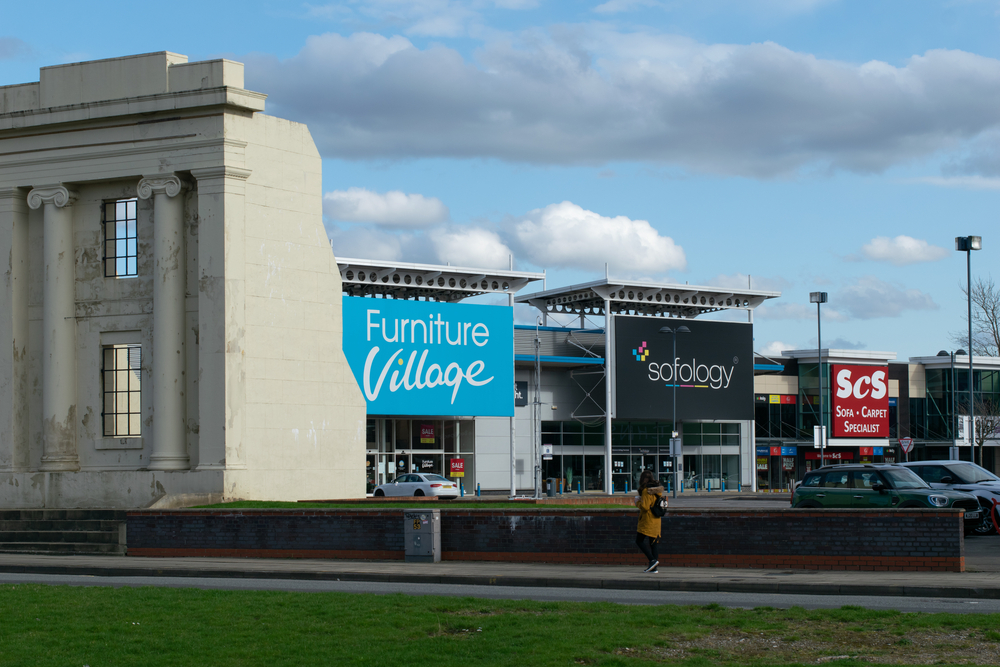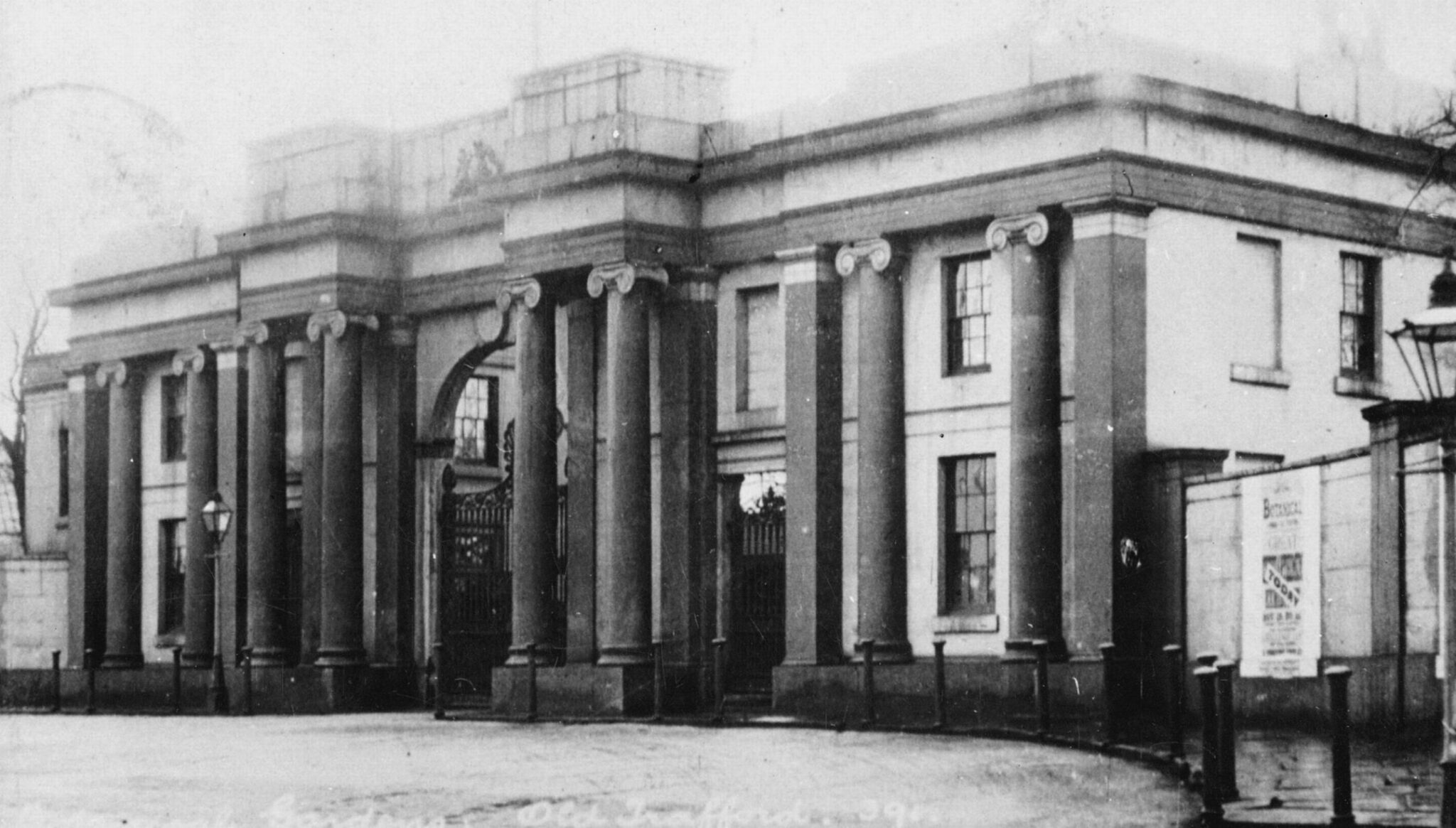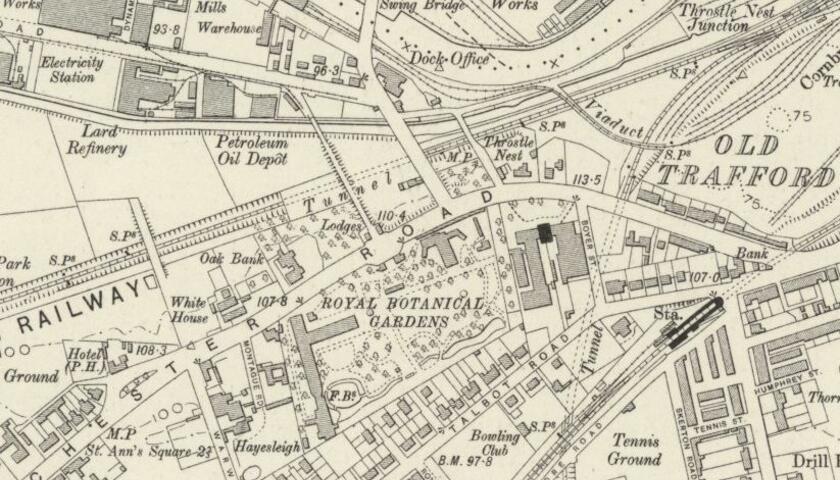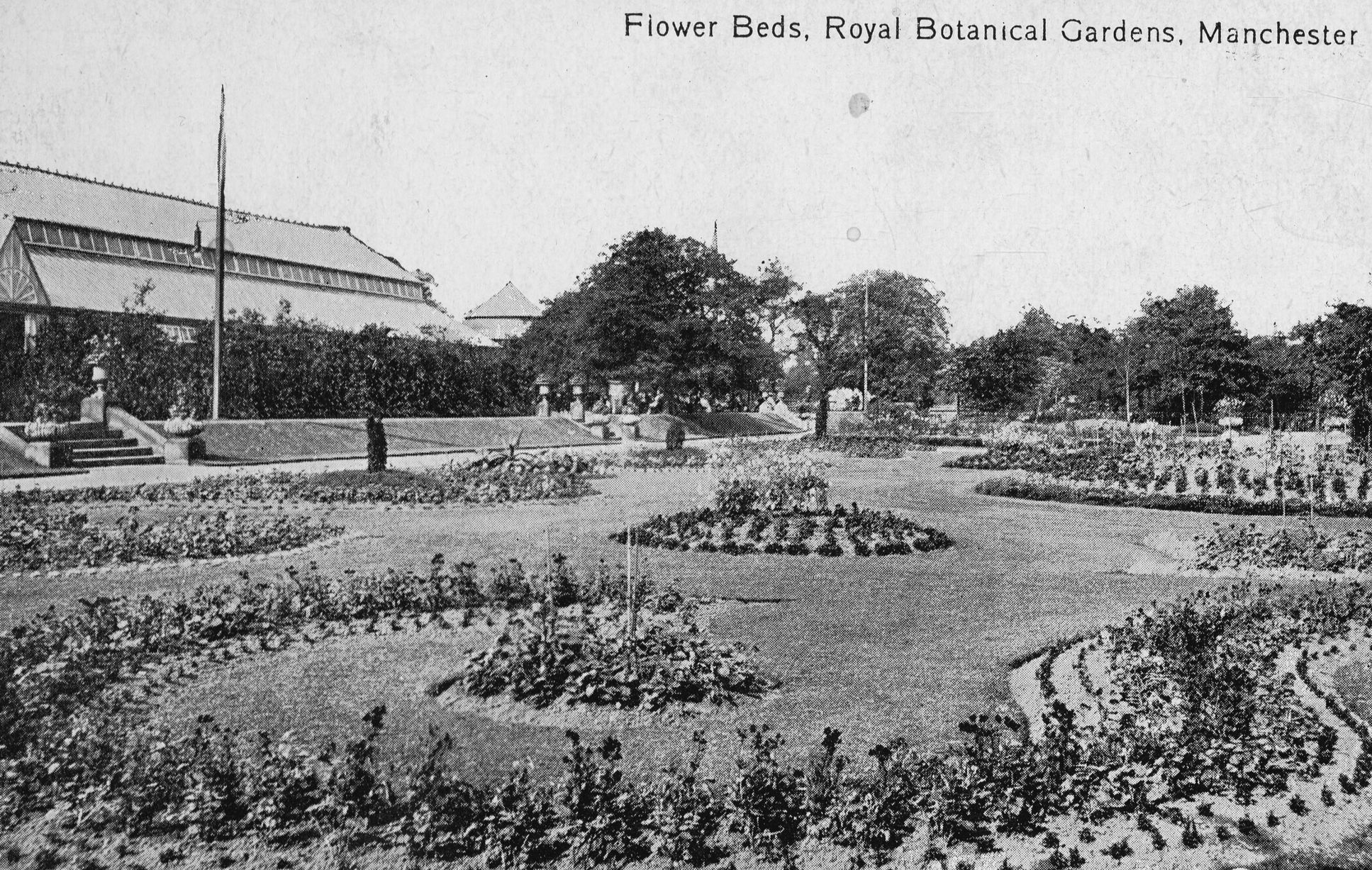Posted by Amber Williams on 12th Apr 2022
Manchester’s Lost Royal Botanical Gardens

As any of our loyal customers will know, our home has long been in Manchester, ever since the Parker family made the journey from Holland in 1933. Now, we sit near the heart of Old Trafford, just a mile down the road from White City retail park.
This seemingly unremarkable retail park holds a secret to Manchester’s past. If you’ve ever driven past the park or have used the White City Circle, you’ll have noticed a big white arch that seems to be a window to nowhere. Like myself, you might have just thought that it was a quirky architectural build. However, this regal white arch is in fact the remnants of Manchester’s first royal botanical gardens.
The Opening of the Royal Botanical Gardens
Circa 1827, a board of horticulturalists met at the Old Manchester Town Hall to appoint a committee that was from then on called the Manchester Botanical and Horticultural Society. After several meetings, they decided that they would open the city’s first and only Royal Botanical Gardens, allowing the citizens of the city a respite from the polluted smog.
12 acres of land were bought from T. J. Trafford himself and construction began. In 1831, the garden opened its doors to the public.
The Garden's Heyday
Manchester’s Royal Botanical gardens were officially open for business, featuring a never-seen-before selection of garden flowers and exotic plants. It even featured a ‘palatial’ conservatory that was over 40 feet high, an orchard, lakes, rockeries, and an expanding lawn on which to promenade.
Business boomed as the garden gave Mancunians space to explore plants that were collected and donated from hidden corners of the world, most of which the average person would never have seen before. Pollution in big cities at this time was rife, and many were frustrated with their quality of life. The gardens were seen as a place for people to unwind and escape the stench (literally) of the city centre.
Pictured: The entrance to Manchester's Royal Botanical Gardens. Credit: Manchester's Finest, Mar 22
Expanding Local Trade
The gardens improved employment rates, which were lacking at this time in history. Gardeners were sourced from the area to help with planting and the everyday upkeep of the gardens, and they even offered apprenticeships to younger people, allowing them to work underneath the more experienced gardening staff.
Plants from across the globe were gifted to the gardens, especially from its predecessor site in London (which still stands today!).
However, the cost of upkeep on the gardens proved to be more expensive than anticipated. This saw the start of the end for the garden.
The Garden’s Competition
Five years after the grand opening of the Royal Botanical gardens, their first rival appeared on the scene. In 1836, Belle Vue amusement park opened just a mere 4 miles from the Royal Botanical Gardens. The zoo started as a humble collection of birds, but the owner had big dreams of Belle Vue becoming Manchester’s very first theme park.
Gradually, the list of amusements grew. By the early 1900s, the park housed its very own zoo complete with zebras, giraffes, and chimps (just to name a few!). Eventually, the park offered patrons entry to a zoo, rollercoasters for thrill-seekers, and even a circus. It’s easy to see how the population of Manchester began to seek something more exciting, leading to the unfortunate demise of the Botanical Gardens.

Pictured: Blueprints for the Royal Gardens. Credit: Manchester City of Trees, Nov 17
The Slow Decline of Manchester’s Royal Botanical Gardens
However, Belle Vue wasn’t the sole reason for the decline of visitors to the gardens. Due to an ecological shift of upper-middle-class citizens moving to the outskirts of Manchester, attendance at the gardens dwindled. This group of people were, unfortunately, the main patrons of the gardens, leading to a huge loss of revenue.
Luckily, the committee had one last card up their sleeves. An Art-Treasures exhibition opened at the gardens in 1856 to help raise money, allowing them to stay open to the public. Even Queen Victoria was invited to attend, although there is no information on whether she made an appearance.
The exhibition sought to house paintings, sculptures, and even more exotic and exciting plants that weren’t already found in the conservatory. Unfortunately, a disagreement with the catering staff turned the whole do into a disaster, causing people to leave in droves.
The Final Nail in the Coffin?
It’s said that the director of the catering company requested temporary tents for their staff to stand under, which was denied by the committee. This disagreement led to a swift exit of his staff, leaving the exhibit with no snacks or refreshments.
On top of this, the tickets to the exhibit were for one entry only. As people got hungry and left to get food, they weren’t seen again.
As you can imagine, this was a fatal blow to the committee's funding. In 1857, the curator for the Gardens – Mr Campbell, was charged with ‘gross ignorance and mismanagement’. He was asked to leave, and a new curator was appointed in 1858 – Mr Bruce Findley. This change in management allowed the Gardens to get back on track, allowing them to thrive for decades more.

Pictured: Flower beds within the Botanical Garden Grounds. Credit: Manchester's Finest, Mar 22
The White City Group
All good things must come to an end, as they say. The Gardens had curated too much debt over the few decades, and after a few failed deals, the land was sold to John Calvin Brown who owned a company called Heathcote & Brown Ltd. He eventually founded a company which he called ‘The White City, Manchester’. This name can still be seen on the grand white arch to this day.
John Calvin Brown was a connoisseur of entertainment and amusements, having an extensive background in creating things like ice rinks, concerts, and various fairground rides. His exciting plans, like a miniature train ride, gave the gardens a new attraction, enticing people to reattend for the first time in years.
In 1912, the White City, Manchester ltd went bust and no longer were affiliated with the Gardens. Not long after, the First World War began in 1914 and attendance dropped once again.
The Garden In Wartime
The Royal Botanical Gardens oversaw one last exhibition which they named ‘The Garden In Wartime’ which ran in 1916. Eventually, the committee had to admit to their financial struggles and eventually sold the grounds in 1927.
The gardens were sold to a new company for £40,000. They turned the grounds into a Greyhound racetrack until this also closed in 1982. Similarly, Belle Vue Zoo closed its doors in 1982 after being swamped by debts. The legacy of the Royal Botanical Gardens lives on only in the last remnant of its history – the white archway.
Just two Royal Gardens remain in the UK: Kew Gardens in London and Inverleith Row in Edinburgh. Although the Gardens no longer stand, its legacy lives on in history, inspiring many gardeners to this day.

